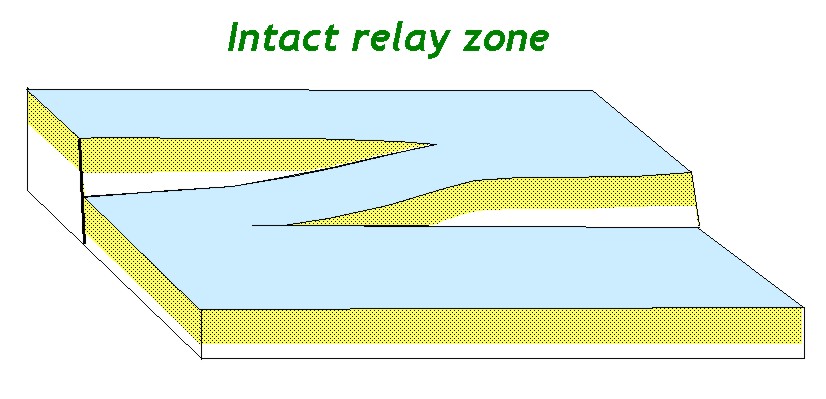

Schematic diagram showing the displacement transfer between two normal fault segments; the displacement on both segments is the same. The overlap zone between the fault segments is called a relay, and within horizontally bedded sequences is characterised by a relay ramp.
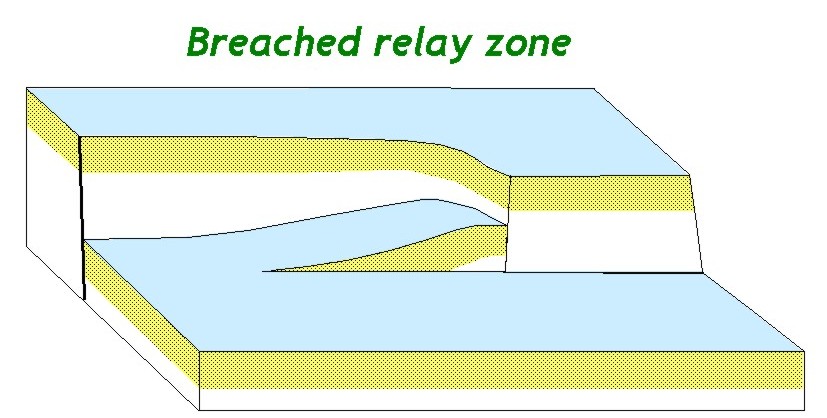
Increased displacement on the relay inevitably leads to the breaching of the relay ramp, generally by propagation of either the footwall or hangingwall fault segment at the top or the base of the ramp.
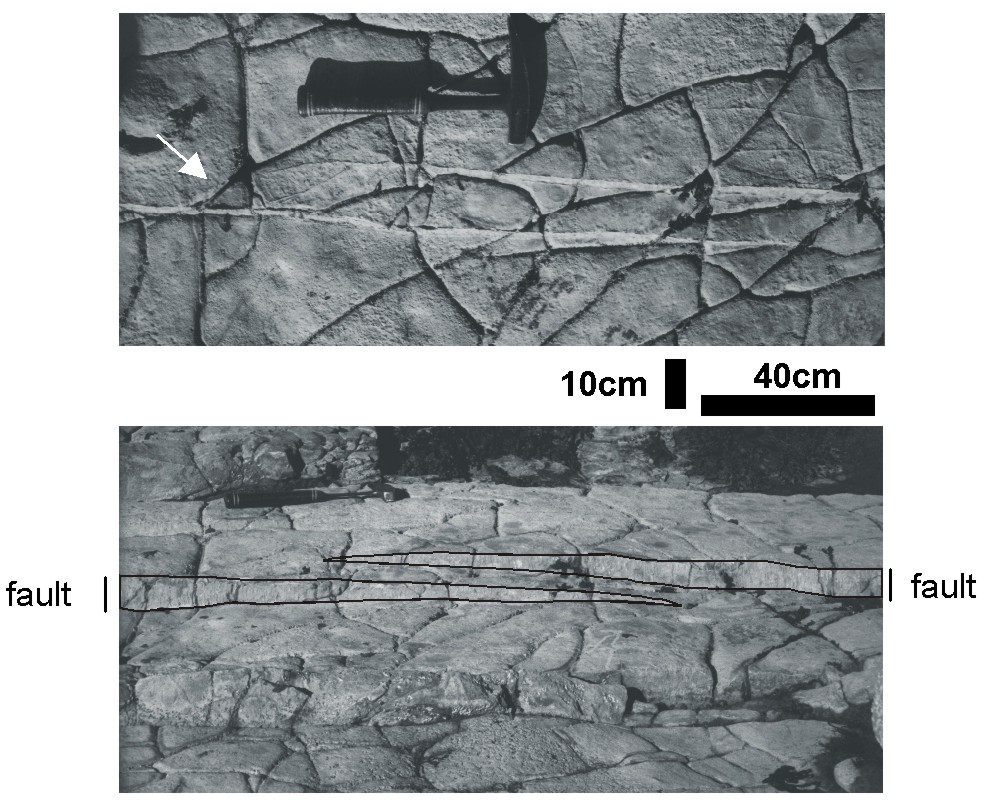
Relay between ca 8cm displacement normal fault segments in the Liassic limestones and shales of Kilve, Somerset, UK. Map view and view from hangingwall highlight the geometry of the relay ramp between the fault segments.
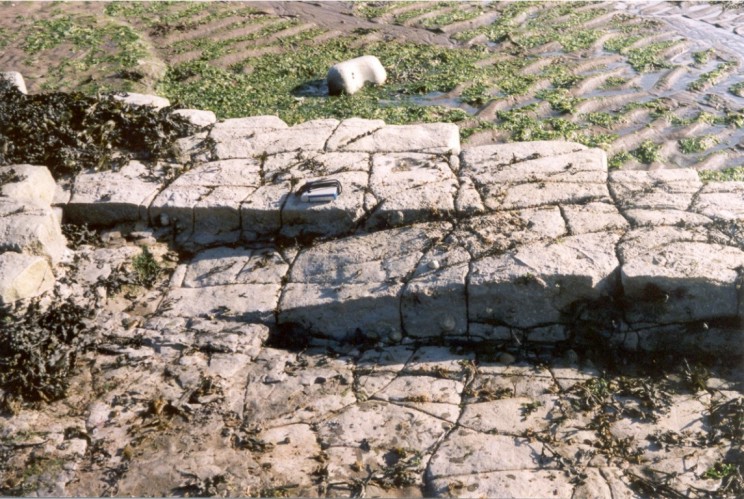
Relay ramp between normal fault segments, with ca 20cm displacement, in the Liassic limestones and shales of Kilve, Somerset, UK. This view from hangingwall highlights the geometry of the relay ramp between the fault segments.
Breached relay on small normal fault (10cm throw), in which the footwall fault has cut across the top of the relay ramp. Kilve, Somerset, UK. Hammer for scale.
Normal fault segments, with 45cm displacement, bounding a breached relay within limestones from Malta.
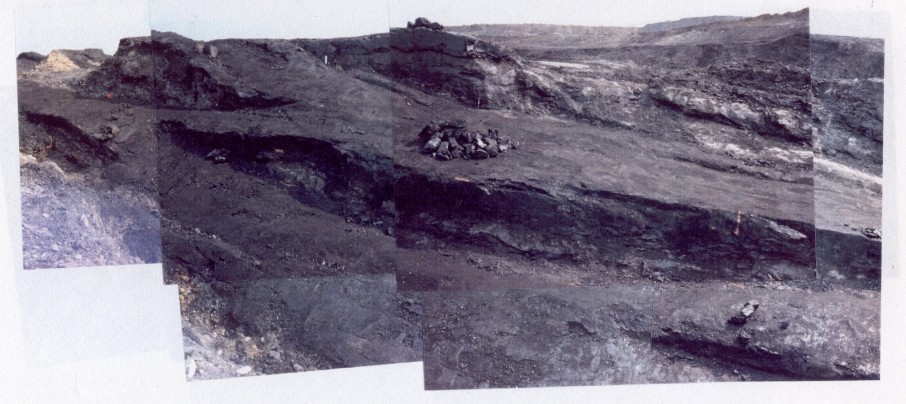
View from the hangingall of a series of normal fault segments (with throws up to 3m) exposed on a coal seam from Plenmellor opencast site, Northumbria (photograph from PhD thesis of Paul Huggins). Examination of this array during extraction of the site suggests that these segments appear to link into a single fault surface a few metres below this level.